Revitalize Your Corn Plant: Rejuvenation and Propagation
If you’re looking to breathe new life into your tired Corn Plant or even propagate new ones, you’re in the right place! Revitalizing an old plant and creating new ones can be a rewarding experience.
Let me share my journey with two old Corn Plants that I inherited. They hadn’t been repotted in over twenty years, and needed care.
These plants had spindly stem that needed staking to support the leafy top. To help these plants thrive again, I decided to rejuvenate them by removing the top sections and repotting. Here’s how I did it.
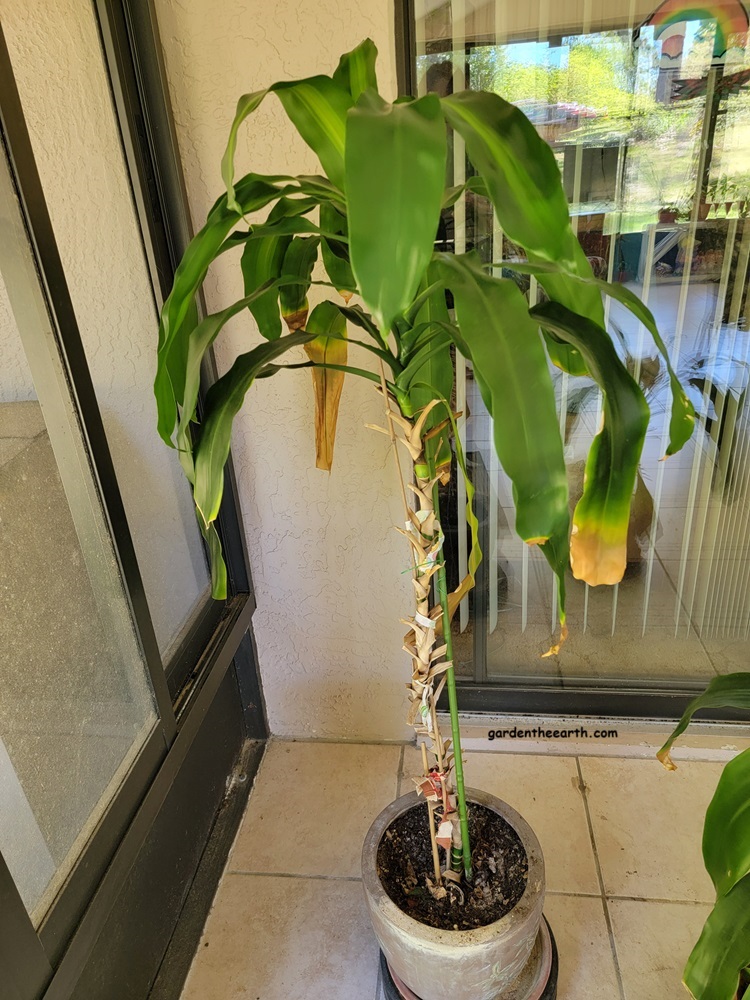
To rejuvenate the plant, the top section will be removed and repotted, and part of the stem will be used to grow roots.
Preparing Your Plant for Repotting
My intention was to start the plants with the soil level directly below the first set of leaves, so followed these steps:
1. Clean up the stem by gently peeling away the dead brown pieces and removing any dead leaves.
2. Inspect the stem to ensure it is healthy and clean in preparation for being replanted.
3. Measure below the first set of leaves the length of the stem for the depth it will be planted into its new pot. Cut the stem across with a sharp blade. The stem can be tough, so use a sturdy sharp razor or cutters. The stem should be cut cleanly across and not crushed.
Here is what the rejuvenated plant looks like, ready to be planted into new soil.
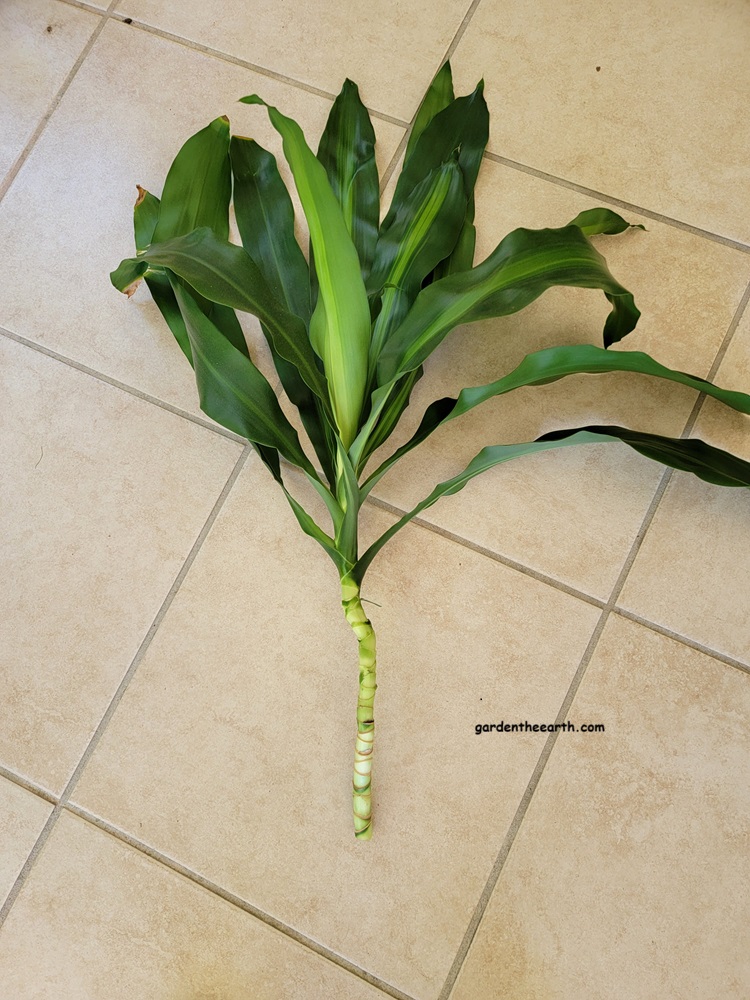
This piece is now ready to be planted into soil up to the bottom leaves. I like to use a rooting powder to promote root growth, but it’s not necessary.
If using rooting powder, make the hole in the soil first, then gently lower the stem into the hole without disturbing the rooting powder. Gently press soil around stem to secure.
Propagate New Plants
I propagated new plants by following the same method using the remainder of the stem. Cut stem sections, clean old leaves off and apply rooting powder. Plant in soil, leaving a section above the soil where new leaf nodes will form.
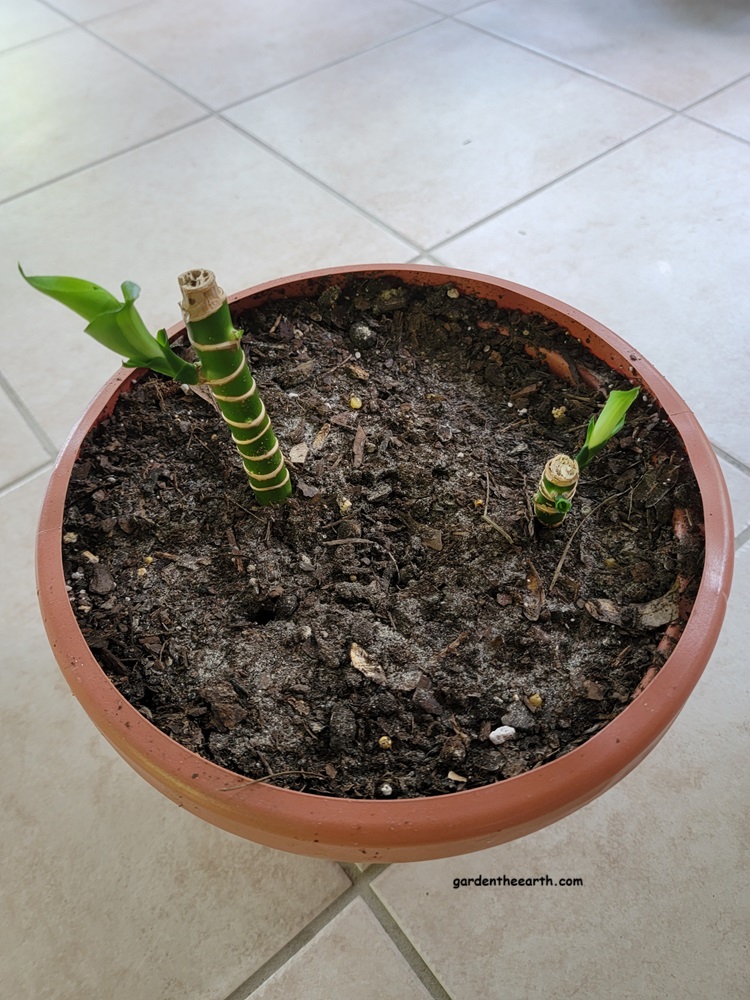
After several weeks, I was thrilled to see new leaves sprouting!
Repotting the Main Plant
If the original root system is still viable, you can re-pot it and create another new plant. Since these plants had weak stems, I intended to start the plants growing from the base of the soil to re-establish fresh stems. Here’s how:
1. Gently remove the plant from its original pot. Rinse the soil off the roots. I always rinse the roots of my plants when I repot them to eliminate any old soil. It also allows you to inspect the condition of the roots. I find that using a hose outdoors works wonders for this task.
2. Carefully remove any dead leaves to reveal a clean stem.
3. With clean roots and stem, it’s time to plant in fresh soil. Plant at the depth as it was originally. Make sure to leave a section above the soil for new leaf nodes to grow.
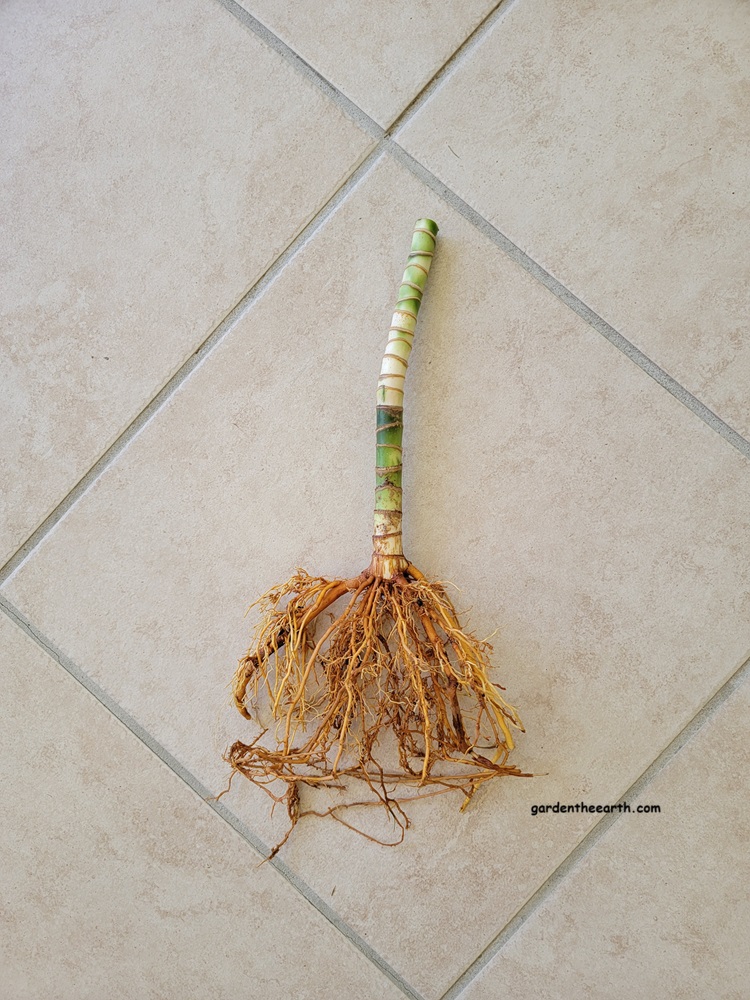
Now that the roots and stem are clean, it’s ready to be planted into new soil. I left about an inch and a half of the stem sticking above the soil for the new leaf nodes to grow.
Six Months Later
It’s been about six months since I propagated and repotted these plants, and I’m happy to report that they are all thriving!
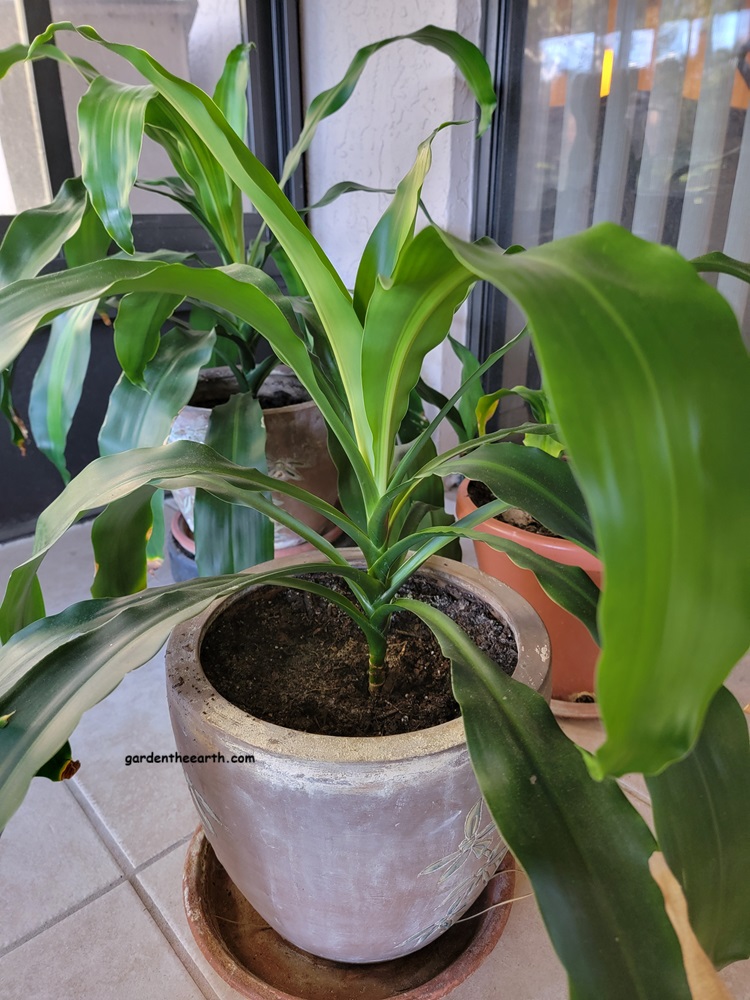
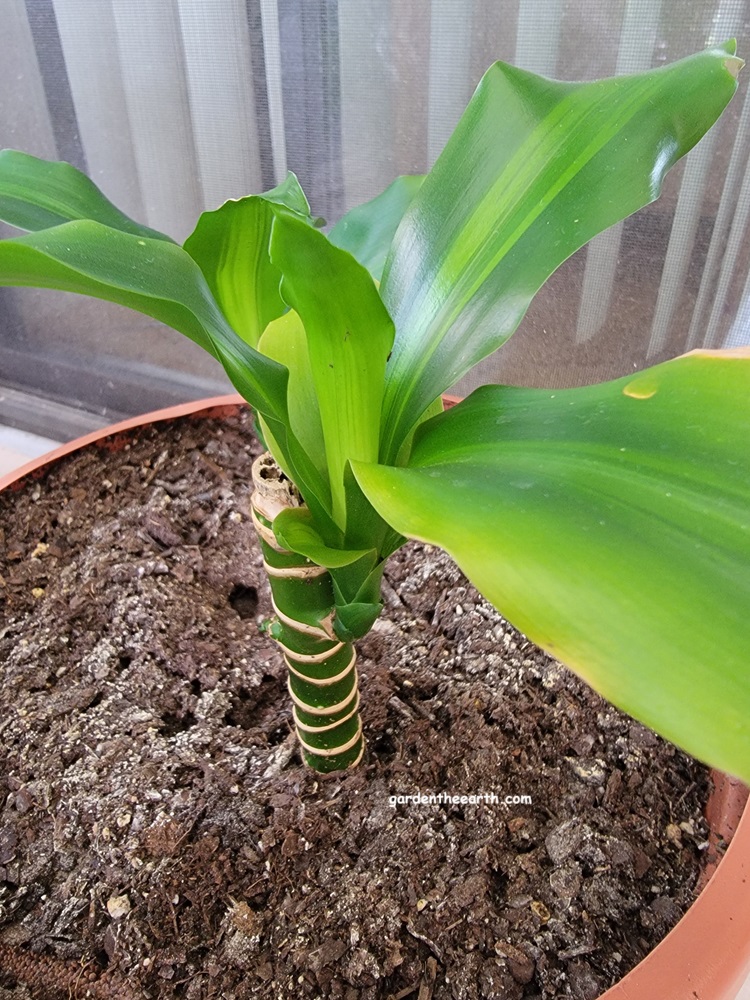
Here are some tips I learned while revitalizing my Corn Plant:
Tips for Growing Propagated Corn Plant
Ensure Proper Drainage
Use planters with drainage holes at the bottom. Without proper drainage, soil will get soggy and the roots will rot. Water should drain from the container and not accumulate in the bottom.
Soil
Use a well-draining commercial potting mix. These mixes often include ingredients like peat moss, perlite, and compost, which improve drainage and nutrient content.
Moisture
Soil should be kept moist but not soggy around the stem sections while roots form. Do not overwater. The soil can dry out on top between waterings.
Light
Place dracaena in a spot with bright indirect light for best results. Long periods of direct sun exposure can cause leaf scorch.
Temperature
Most dracaena species thrive at temperatures of 70 to 80 degrees F. They do not like temperatures below 50 degrees F or temperatures that quickly fluctuate between extreme highs and lows.
Leaf nodes should appear on stem sections in about three weeks. A rejuvenated top section will react with upright leaves and new growth in the center.
A Worthwhile Experience
This whole experience of giving my Corn Plants a fresh start and creating new plants was incredibly fulfilling. It was genuinely exciting to see the first leaf nodes form!
I found the Corn Plants to be quite resilient and responded well to these methods of propagating. Give it a try and see how many new plants you can create!
Explore More

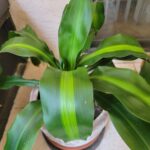
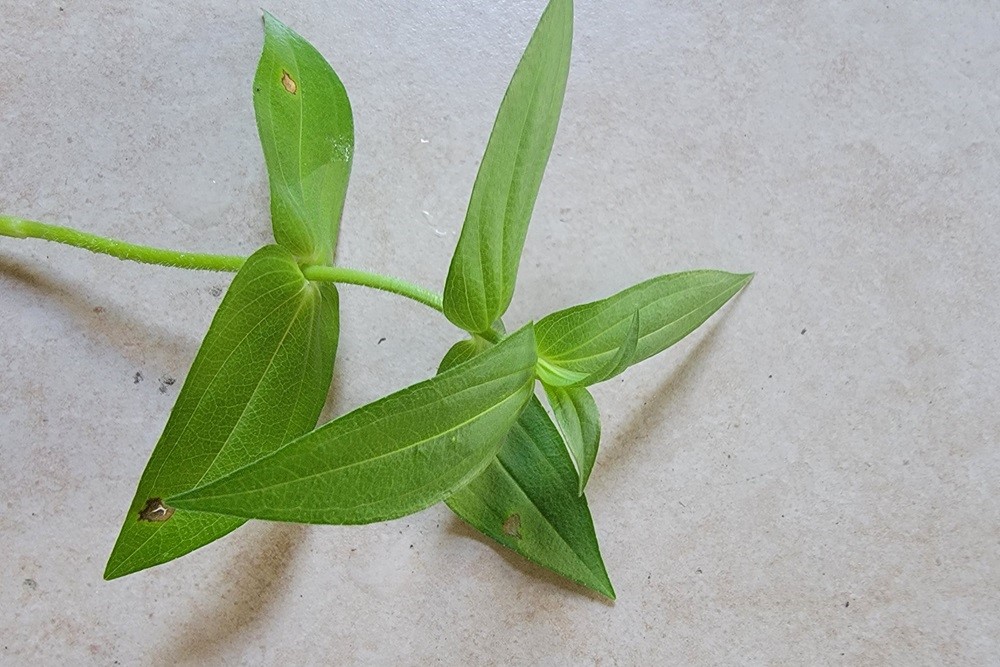
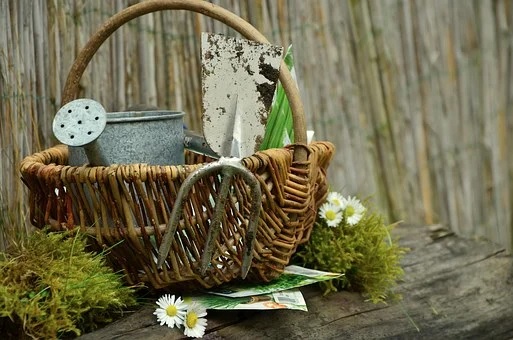
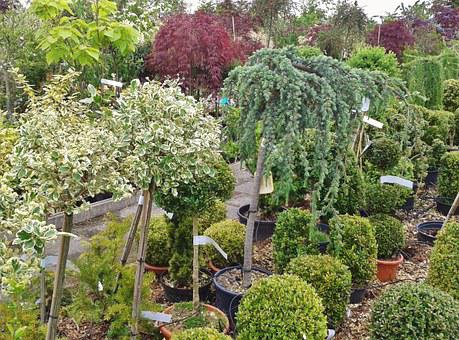

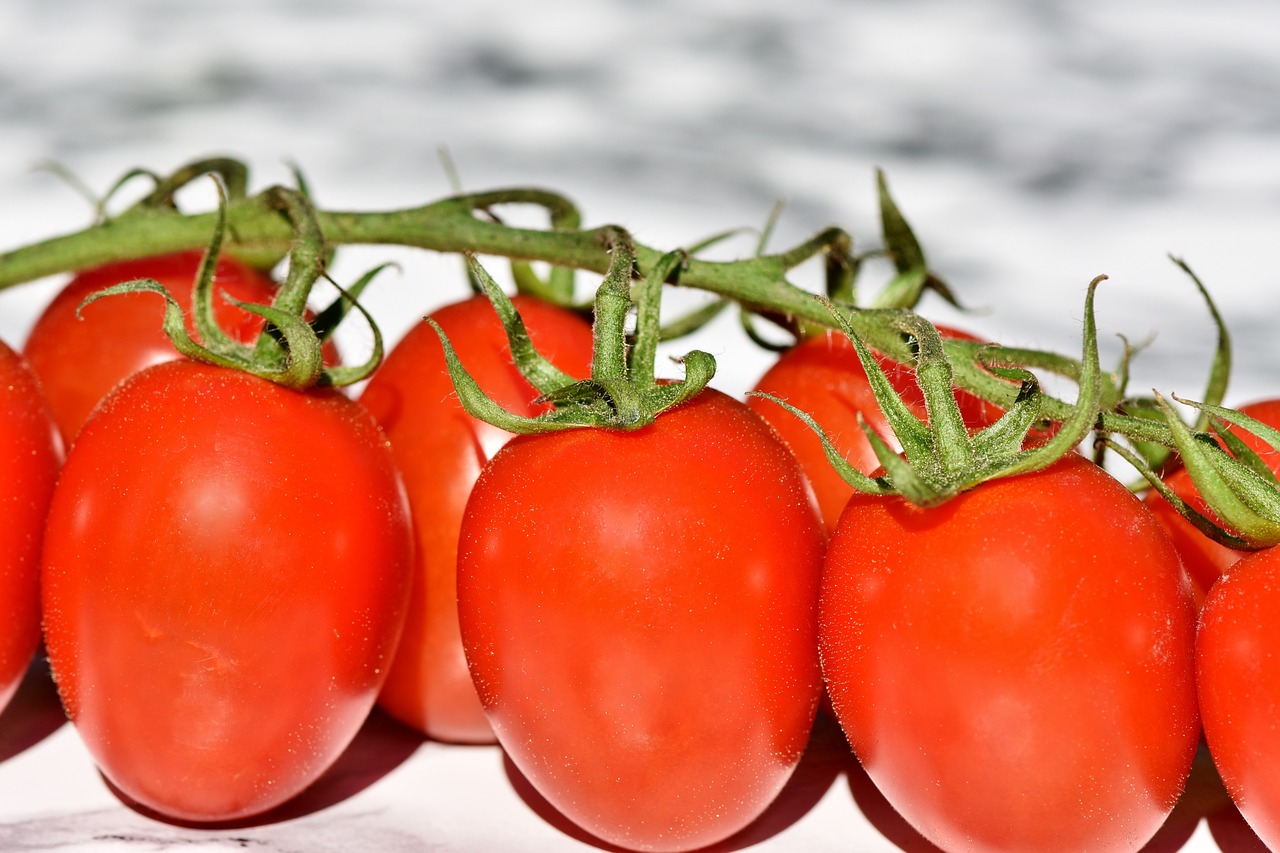
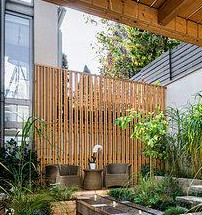
Comments
Revitalize Your Corn Plant: Rejuvenation and Propagation — No Comments
HTML tags allowed in your comment: <a href="" title=""> <abbr title=""> <acronym title=""> <b> <blockquote cite=""> <cite> <code> <del datetime=""> <em> <i> <q cite=""> <s> <strike> <strong>